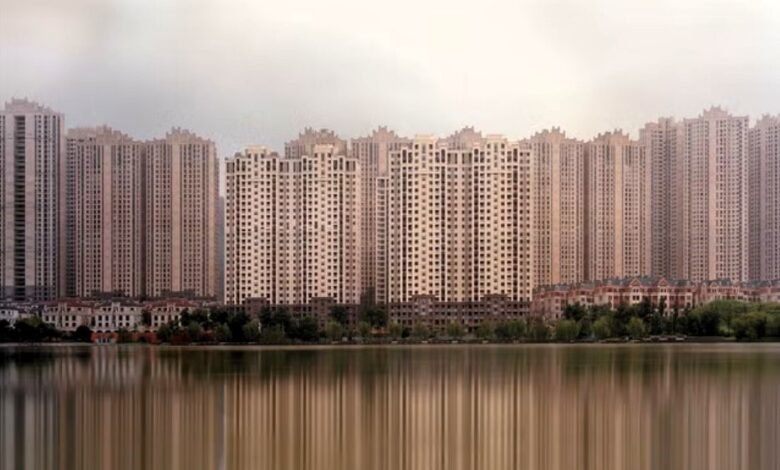
The 50 Ghost Cities of China And Their Future
China is home to over 50 so-called “ghost cities,” urban developments characterized by modern infrastructure but often lacking residents. These cities, including notable examples like Kangbashi and Yujiapu, were designed to accommodate millions yet have only a fraction of that population. This article explores the phenomenon of ghost cities in China, examining their origins, current status, and future potential.
Understanding Ghost Cities in China
What Are Ghost Cities?
Ghost cities are urban areas that have been constructed but remain largely uninhabited. Despite their modern amenities and infrastructure, these cities often struggle to attract residents. The term “ghost city” can be misleading; many of these developments are not entirely empty but are underpopulated compared to their original designs.
Key Examples
- Kangbashi, Ordos:
- Originally planned for one million residents, Kangbashi has seen its population grow from around 30,000 in 2009 to approximately 150,000 by 2021. Its development has included significant government investment in infrastructure and services, which has slowly attracted more residents.
- Yujiapu Financial District:
- Envisioned as a financial hub akin to Manhattan, Yujiapu remains sparsely populated despite impressive skyscrapers and modern facilities. Its proximity to Beijing and status as a free-trade zone may eventually lead to increased occupancy as businesses and residents seek opportunities in the area.
- Tianducheng:
- This city features a replica of the Eiffel Tower and was designed for 10,000 residents but has struggled with low occupancy rates. It highlights the challenges faced when ambitious themes clash with actual demand.
The Origins of Ghost Cities
The rise of ghost cities can be attributed to several factors:
- Government Policies: Local governments often construct new urban areas to stimulate economic growth, driven by investment incentives rather than actual demand for housing or services. This has led to the creation of vast urban spaces without corresponding populations.
- Economic Strategies: In an effort to modernize and urbanize rapidly, China has implemented policies that prioritize large-scale construction projects. These developments are sometimes built in locations without historical or geographical justification, leading to underutilization.
- Speculative Investment: Real estate speculation has fueled the construction of new urban areas. Investors purchase properties in anticipation of future growth, but if demand does not materialize quickly enough, these areas can become ghost cities.
Current Status of Ghost Cities
While many ghost cities were once considered failures, recent reports indicate a shift towards increased occupancy:
- Kangbashi: The district is gradually filling up as infrastructure improves and local amenities become available. By 2021, it housed around 150,000 residents and continues to evolve as a functioning urban area.
- Zhengdong New Area: Once labeled a ghost city, it has seen its population grow significantly due to its strategic location near industrial hubs. Reports indicate that its economy has flourished since its initial label as underpopulated.
- Pudong, Shanghai: Initially criticized for being a ghost city filled with empty skyscrapers, Pudong has transformed into a vibrant financial district with over five million residents today.
Future Prospects
The future of China’s ghost cities is not set in stone; many are on the path toward becoming fully functional urban areas:
- Population Growth: As infrastructure develops and local economies grow, populations in these areas are expected to increase. Government initiatives aimed at improving living conditions will likely attract more residents over time.
- Urban Planning Adjustments: Some local governments are re-evaluating their urban planning strategies to create more realistic growth expectations. This includes enhancing public services such as healthcare and education to make these areas more appealing.
- Cultural Shifts: As younger generations move into these areas seeking affordable housing and modern amenities, the dynamics of ghost cities may change significantly. Increased connectivity through transportation improvements can also play a crucial role in attracting residents.
Conclusion
China’s ghost cities represent a complex interplay between ambitious urban planning and economic realities. While they have been criticized for their underpopulation, many are evolving into functioning urban centers as time progresses. Understanding this phenomenon requires looking beyond the label of “ghost city” to appreciate the broader context of China’s rapid urbanization and economic development.As these cities continue to develop and adapt, they may redefine what it means to be a successful urban area in the modern world. With ongoing government support and increasing interest from residents and businesses alike, the narrative surrounding China’s ghost cities is likely far from over.
For more Breaking news and updates, click here.
Connect with us on X/Twitter here.



